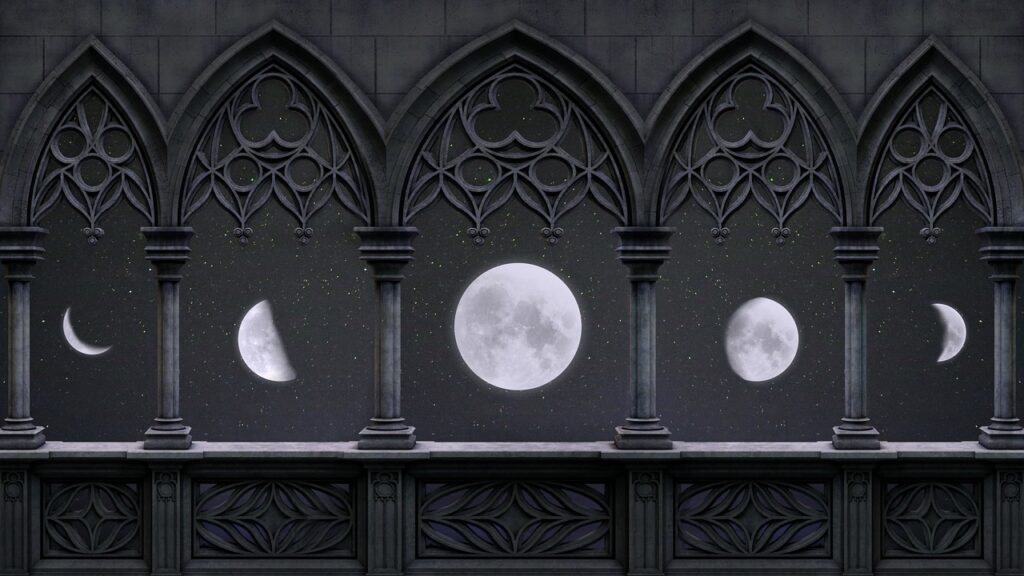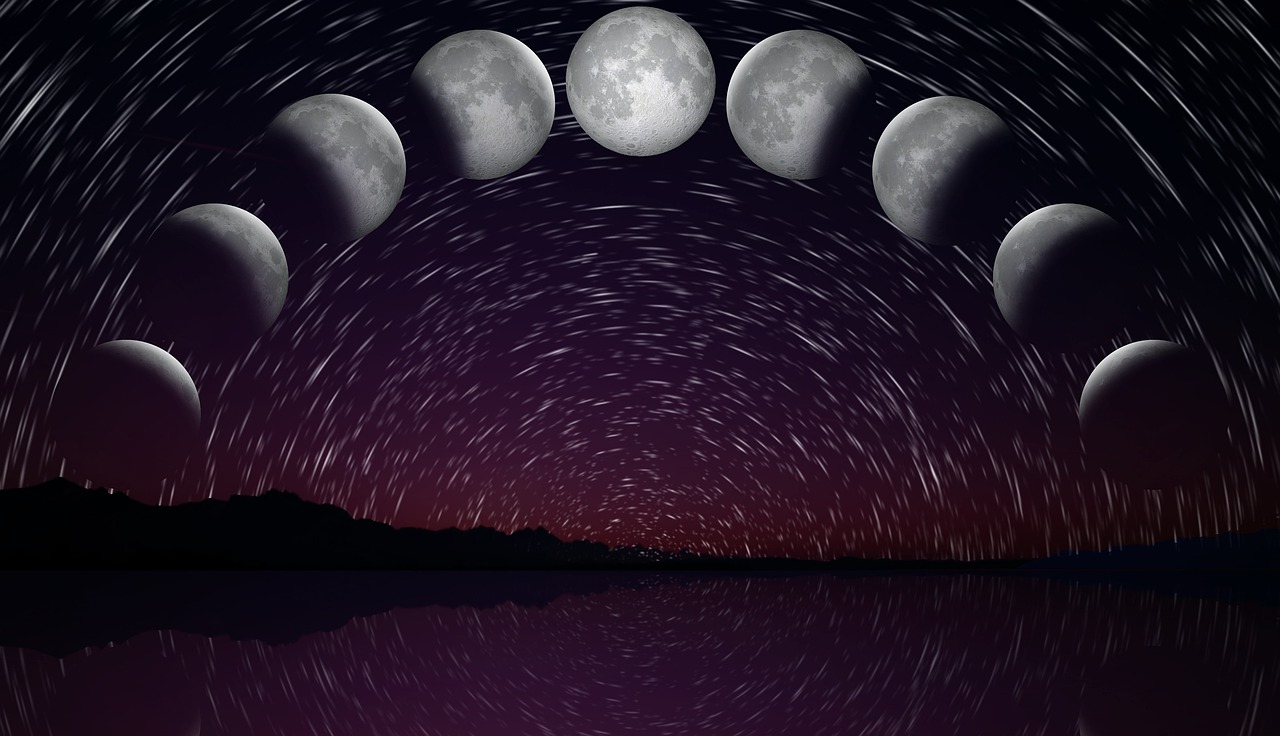季節の自然現象を組み込んだ「自然暦」は、地域の実情に即したものという利点がある一方で、より広い範囲・共同利用するには不向きだった。
人々が目にする自然の周期には、「太陽の運行」や「月の満ち欠け」があり、なかでも「30日程度の周期で、観測しやすい月の朔望」をもとにした太陰暦が暦として用いられたと考えられている。
朔=新月 / 望=満月
While the “natural calendar,” which incorporates seasonal natural phenomena, has the advantage of being tailored to local conditions, it is not suitable for wider use or shared use.
The natural cycles that people see include “the movement of the sun” and “the waxing and waning of the moon.” Among them, the lunar calendar is a calendar based on “the lunar syzygy, which has a cycle of about 30 days and is easy to observe.” It is thought that it was used as
Among them, the lunar calendar, which was based on “easy-to-observe lunar with a cycle of about 30 days,” is thought that it was used as a calendar.
Saku(朔)=New moon / Bou(望)=Full moon

国立天文台:太陰暦 (Lunar calendar)より
・新月を含む日を1日とし、月の満ち欠けで1か月を定める暦です
・とくに、イスラム暦は現在でも広く使われています
・29日 (小の月) と30日 (大の月) で平均29.5日の満ち欠けに合わせます
・日付から月の形がわかります
・太陰暦の1年は29.5×12=354日と太陽暦の1年よりも短いため、両者の日付は毎年11日くらいずつずれていきます
*これを補正するのが太陰太陽暦です
・It is a calendar in which the day that includes the new moon is counted as a day, and the month is determined by the waxing and waning of the moon.
・In particular, the Islamic calendar is still widely used today.
・The 29th (small moon) and 30th (large moon) match the average waxing and waning of 29.5 days.
・You can tell the shape of the moon from the date
・One year in the lunar calendar is 29.5 x 12 = 354 days, which is shorter than one year in the solar calendar, so the dates of the two differ by about 11 days each year.
※The lunisolar calendar corrects this.
詳細はこちらより

